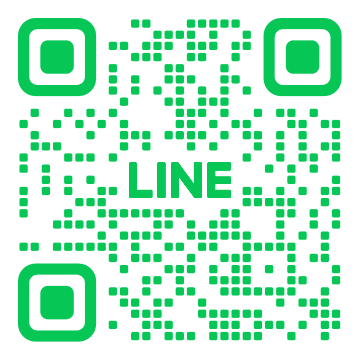Business outcomes are the highest-level objectives that you’re chasing. Think of these as the main priority of the company as a whole. One of the best ways to achieve your goals is to be realistic, but at the same time, pursue what is important. It all comes down to prioritizing what is important and dedicating yourself just that. Learners can physically demonstrate the outcome of their learning. Now for the part you’ve all been waiting for — the formula for writing project objectives.
The questions below will help facilitate the value proposition and purpose discussion. Success or failure in this activity will have a significant impact on whether you achieve the expected outcomes. A high level of trust will increase the quality of this activity, in contrast, a low level of trust will create a less desired result. Believing in yourself is a key factor when it comes to achieving your desired outcomes. Be able to put your mind over matter and believe that you are capable of achieving what you set out to do.
- Believing in yourself is a key factor when it comes to achieving your desired outcomes.
- This type of objective focuses on upgrading the quality of services or products delivered to customers to improve outcomes and get you closer to your business goals.
- Business outcomes are the highest-level objectives that you’re chasing.
- Evidence shows that people with a malleable theory are more willing to learn, able to stick to difficult tasks, and capable of bouncing back from failures (Dweck, 2006).
- As noted above, successful goal pursuits require figuring out which wishes are desirable and feasible and which ones to let go.
Motivation is generally described as the force that drives us to pursue a goal. The more you want the goal, the more likely you are willing to make the efforts and sacrifices required to achieve it. We rarely do anything if we lack emotion or don’t care about it. Although OBCs may seem a little laissez-faire to the casual or less informed observer, they actually require sustained cultural commitment to well-defined, well-understood outcomes. This reflects Gallup’s analytics-based hiring approach. The results of an analysis using this approach show how the right capacities for the role aren’t always what we think, and they’re not always overt, either.
Be clear in how the work product will be used by others. Ultimately, you must understand the outcomes you’re chasing to build truly impactful product roadmaps. Business outcomes tell you where you want to go as a company. Product outcomes define where you want to take the product. User outcomes answer what changes for users you want to drive.
It doesn’t tell learners what they are expected to learn, nor is it useful for assessments. Instead, that goal should be broken down into smaller parts. You must first start with the main learning goal of the learning activity. Learning outcomes must show what the expected level of learning or understanding should be, and it should be reasonable to the level of the learners.
02. Goals and Desired Outcomes
Project goals are the general long-term outcome you want to achieve, while project objectives are short to mid-term actions required to achieve a goal. No, project objectives and project goals are different but essential elements used in project planning and execution. Every project starts with a high-level company vision statement describing your business aspiration, which you might or might not achieve. The vision statement helps inform, inspire, and motivate your project team. Then, be specific as to the resources that are available to support the work that needs to be done.
You can also make plans that show you what steps you need to take to accomplish the goal. Using collaborative timelines, automations, and dashboards, teams can easily create a detailed action plan to achieve project goals and objectives. Use self-discipline to help you focus on achieving your desired outcome. Utilizing self-discipline also helps keep you from making excuses as to why you cannot reach those goals or achieve a certain outcome. As mentioned above, well-written learning outcomes focus on what the learner can concretely demonstrate after they complete the learning activity. A learning outcome is only useful if it is measurable.
What are learning outcomes?
However, there are many other approaches to defining what specific problems to solve and what solution to ship. If you are not a fan of opportunity solution trees, just use a method that works for you best. Let’s assume, in your case, people are simply dissatisfied with the product experience they are having, and your satisfaction surveys say that the average satisfaction score is 60 percent. I personally use the “10 percent improvement” approach. On the other hand, if you focus on the wrong outcomes, you might spend months shipping features and improvements that ultimately don’t lead you to where you want to go. After all, these outcomes then guide your decision-making and prioritization process.
New product
When developing these programs, both management and instructors need to be clear about what learners should understand after completing their learning path. Dr. Sue Bath, Senior Workplace Consultant at Gallup, was our guest on a recent Called to Coach. In Part 2 of this 2-part series, Sue talks about strengths-based development and how managers can develop employees’ strengths to achieve outcomes.
Identify project objectives, needs, and scope from idea to execution, and achieve project goals that ladder up to company-level goals. Assign owners, set clear deadlines, follow the status of individual projects, and keep stakeholders up-to-date. Learn how committing to a performance development approach can arm your managers to lead their employees and teams to greater outcomes. Looking at someone who is proactive can help motivate you to make plans and work towards your desired outcomes. Proactive people tend to achieve their goals much more than the reactive ones.
The article will discuss ten steps that can help someone achieve their desired outcomes. Understanding what your desired outcomes are is the most important part achieve outcomes of your goal-setting process. In this article, you’ll understand how to define what success means for you and map out good habits that will get you there.
Anticipated regret can promote goal achievement via guilt about missed opportunity. Regret helps people stick to their intentions and be more successful in self-control, such as eating healthy food (Zeelenberg, 1999). As noted above, successful goal pursuits require figuring out which wishes are desirable and feasible and which ones to let go. Mental contrasting is a powerful tool to link desirable goals to present reality.
This type of learning outcome deals with competence or skill. The learner can demonstrate their understanding of the new concept. This type of learning outcome deals with knowledge or intellectual skills. The learner understands the new concept that they are being taught. With this type of learning outcome, the learner will understand concepts, rules or procedures. Put simply, this is understanding how to do something.
Get your teams on the same page — try LogRocket today. Try to quantify their answers to figure out where the most impactful areas of improvement are. These will allow you to come to a high-level understanding of what drives users to churn.
Using a simple formula of action verb plus content to be learned plus the context in which it will be used, you can create a well-written learning outcome. With monday work management, organizations can quickly reach shared goals faster and collaboratively at scale. The software helps set visions, goals, and objectives, plus navigate projects, processes, and everyday work. Use the SMART framework to describe the actions required to achieve your goals.
Examples of learning objectives and learning outcomes
Customers who are fully engaged in a business-to-customer relationship represent a 23% premium in share of wallet, profitability, revenue and relationship growth over the average customer. Business-to-business companies with engaged customers have an average 63% lower customer attrition, 55% higher share of wallet and 50% higher productivity. Customers are the ultimate judges of your performance. Their verdict is in their loyalty and spending, which can be explained and predicted by their level of engagement. Hypothesis-driven development focuses the development effort of validating a team’s most pressing hypotheses.
All of these outcomes are clear, action-oriented and can be assessed by the instructor. Learning outcomes must be written clearly, and should be easy to understand. A strong belief in one’s capacity for achievement is essential https://simple-accounting.org/ for success. Self-confidence is the opposite of anxiety and self-doubt. The confident individual is more likely to persist in the face of obstacles. Confidence is acquired by knowledge, practice/experience, and effort.







